This article explains how to send a model from SAP2000 to ETABS, using BIM Expert.
1. Preparation in SAP2000
If you simply want to have the geometry & loads model in ETABS, without further BIM workflows, analysis in SAP2000 is not required.
2. Send the SAP2000 model to ETABS
2.1 From SAP2000 to BIM Expert
In the Model tab, select ‘Import’. Next, choose the source software manufacturer, namely ‘Computer and Structures, Inc’ (CSI) . Click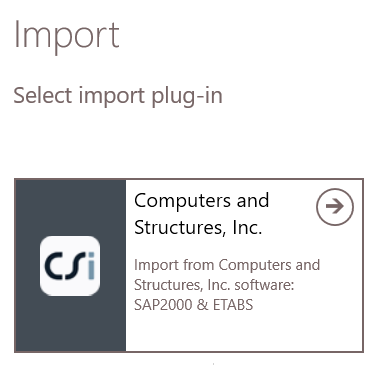 Choose ‘SAP2000’
Choose ‘SAP2000’
 Alternatively, models can be sent to BIM Expert directly within SAP2000 (Tools > BIM Expert), but you first need to add BIM Expert as a plug-in to SAP2000.
Alternatively, models can be sent to BIM Expert directly within SAP2000 (Tools > BIM Expert), but you first need to add BIM Expert as a plug-in to SAP2000.
2.2.1 Settings
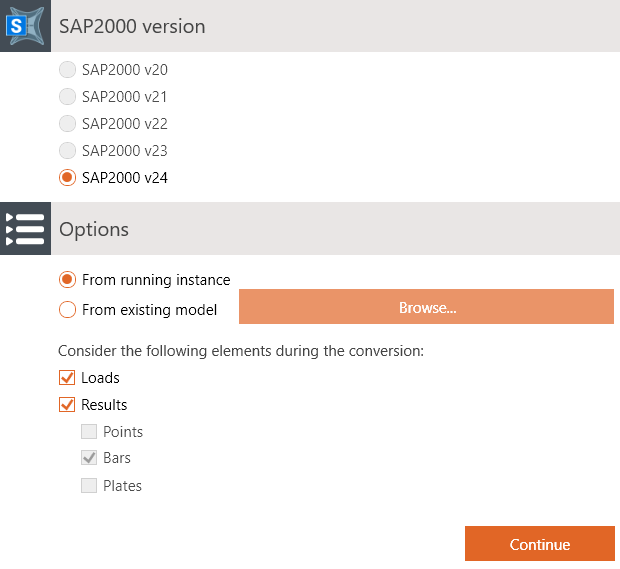 Select your SAP2000 version, and were the model is coming from:
Select your SAP2000 version, and were the model is coming from:
- A running instance – that means, the model is currently open in SAP2000
- An existing model – click ‘Browse… ‘ to open your file browser, go to the model location and select the model
2.2.2 Material mapping
Database materials such as steel (e.g. S235, ASTM-Grades), concrete (e.g. C25/30, M50) and timber (e.g. C24, D50, GL28c) are mapped automatically. In some cases, the match is not automatically found, because the name differs (S355-link instead of S355). In that case, you can select the correct material from the database. Tip: When searching an item in the database, type the first letters of the name to find it more quickly.
2.1.3 Section mapping
Database sections (such as I, H, UB, UC, W, C, U, O, ☐ and L sections) are mapped automatically. In some cases, the match is not automatically found, because the name differs (e.g. name is HEB300 – S235 instead of HEB300). In that case, you can select the correct cross-section from the database. Tip: When searching an item in the database, type the first letters of the name to find it more quickly. Parametric sections (e.g. rectangles, circle, trapezium, …) are not in the database. They should always be added as new.
2.1.4 Loads mapping
If you opted to consider the loads during export, the SAP2000 load combinations need to be categorized. Each valid SAP2000 combination must be categorized into Eurocode or American combinations. Use the checkbox ‘Use categories according to Limit States’ to switch between European and American combination categories.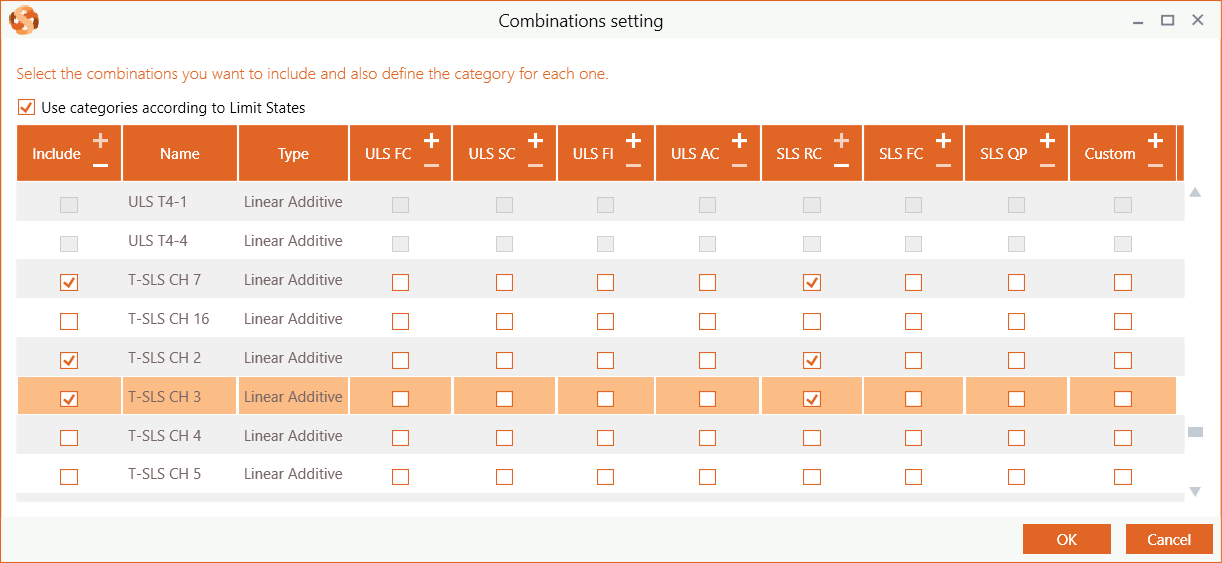
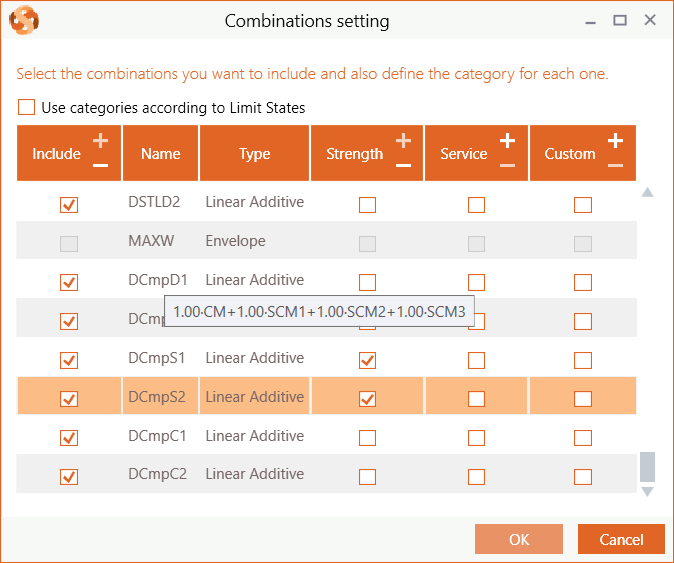
- Eurocode Limit States
- ULS – Ultimate Limit State Combinations: Fundamental (FC), Seismic (SC), Fire (FI) or Accidental (AC)
- SLS – Serviceability Limit State Combinations: Rare (RC), Frequent (FC) or Quasi-Permanent (QP)
- Custom
- Armerican
- Strength
- Service
- Custom
2.1.5 Reporting
In case of severe incidences, you get a report of the incidences. It usually concerns load cases or element behavior that are not supported by BIM Expert. Click ‘Continue’ to proceed anyway.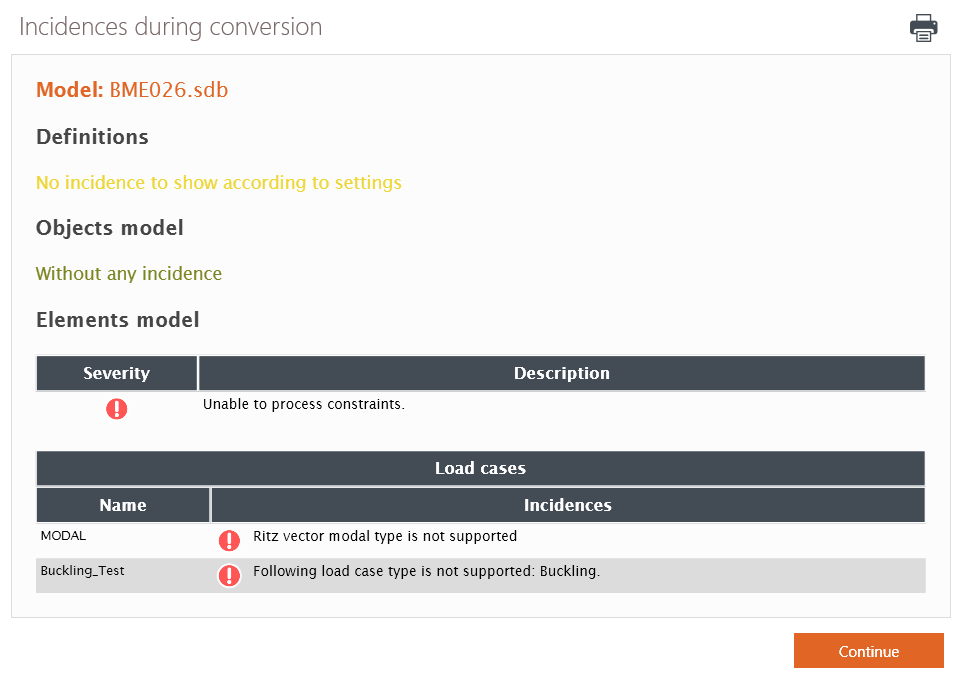 The model is now in BIM Expert.
The model is now in BIM Expert.
2.2 From BIM Expert to ETABS
In the Model tab, select ‘Export’. Next, choose the destination software manufacturer, namely ‘Computer and Structures, Inc’ (CSI). Click ![]() to continue.
to continue.
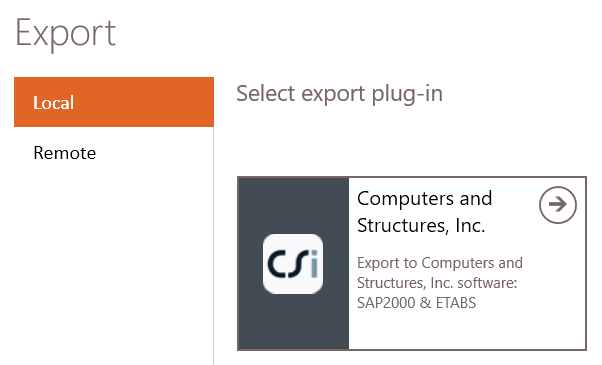
Choose ‘ETABS’
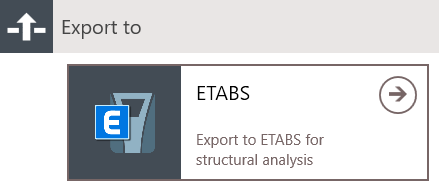
2.2.1 Settings
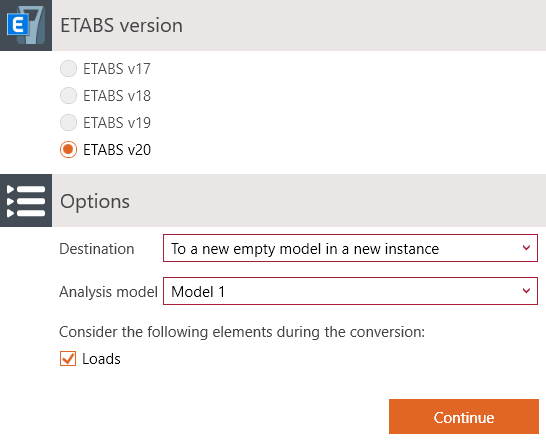
Select your ETABS version, the destination and analysis model. The destination can be either:
- To a new empty model in a new instance
- To current instance and new empty model
ETABS will launch automatically in case of ‘new instance’ choice.
Next, the BIM Expert sections and materials must be mapped with ETABS’ section and materials. BIM Expert will try to find as many automatic mapping matches as possible. In case all sections and materials find a match, you will not see any dialogs for mapping.
2.2.2 Material mapping
In a new file, ETABS only has 2 materials present: Steel S355 and Concrete 30/37. Chances are real that you see the material mapping dialog. If you cannot find a suited counterpart in the ETABS model, the material can be added as new.

2.1.3 Section mapping
A new ETABS model has no cross-sections. So all will be added as new.
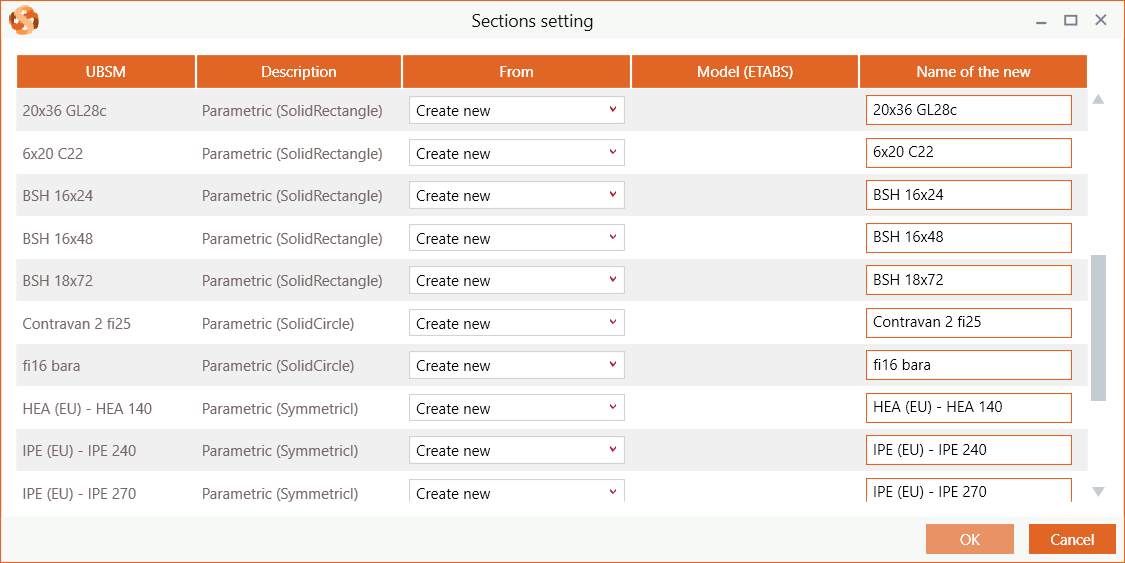
3. Final steps in ETABS
Depending on the chosen destination: launch ETABS and open the file. Or continue working in the open instance of ETABS.

